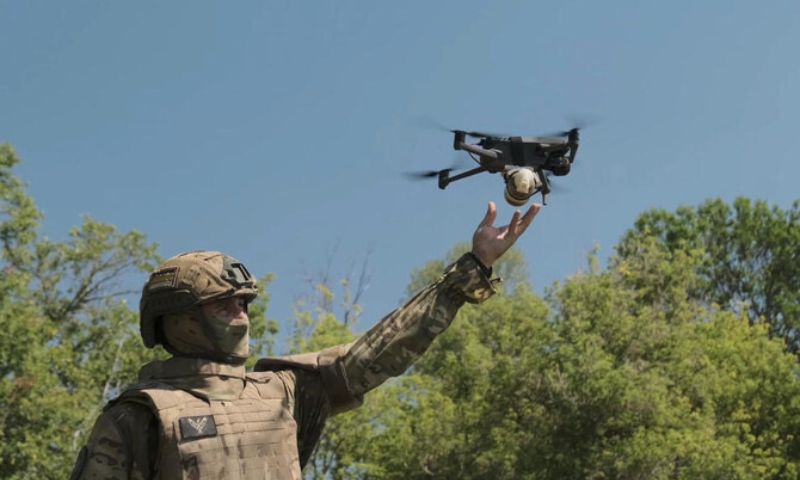VREDEPEEL: NATO wrapped up a significant anti-drone exercise this week, marking Ukraine’s first participation as the alliance seeks to address the rapid advancements and widespread use of unmanned systems in the ongoing Moscow-Kyiv war.
Held at a Dutch military base, the 11-day drills involved over 20 countries and around 50 companies, testing state-of-the-art systems for detecting and countering drones, and assessing their interoperability. The exercise concluded with demonstrations of drone jamming and hacking capabilities, highlighting the critical role of drones in the Ukraine war.
Just days before the exercise ended, a substantial Ukrainian drone attack caused an earthquake-sized explosion at a major Russian arms depot. In response, Russian President Vladimir Putin announced plans to increase drone production tenfold to nearly 1.4 million units this year.
The escalating use of drones for targeting and battlefield surveillance has prompted NATO to intensify its focus on potential threats posed by these systems. “NATO takes this threat very, very seriously,” stated Matt Roper, chief of the Joint Intelligence, Surveillance and Reconnaissance Center at NATO’s technology agency. “This is not a domain we can afford to be passive in,” he added at the exercise site, Lt. Gen. Best Barracks in eastern Netherlands.
Experts have cautioned that NATO needs to rapidly enhance its drone capabilities. A report from the Center for European Policy Analysis highlighted that the alliance possesses too few drones for high-intensity conflicts against peer adversaries and would struggle to integrate its existing fleet effectively in contested environments.
The recently concluded drills were the fourth annual iteration of this exercise. Claudio Palestini, co-chair of a NATO working group on unmanned systems, noted the evolving nature of threats, particularly the transformation of FPV (first-person view) drones, originally designed for civilian racing, into lethal weapons. “Every year, we see new technology altering the threat landscape, but we’re also witnessing significant maturation in counter-drone capabilities,” he explained.
During a demonstration, two small FPV drones raced through the sky, navigating around a military all-terrain vehicle before atheir signals were jammed. While such electronic warfare techniques are prevalent in Ukraine, they are less effective against long-range reconnaissance drones, according to a technology developer from Ukraine’s defense ministry.























